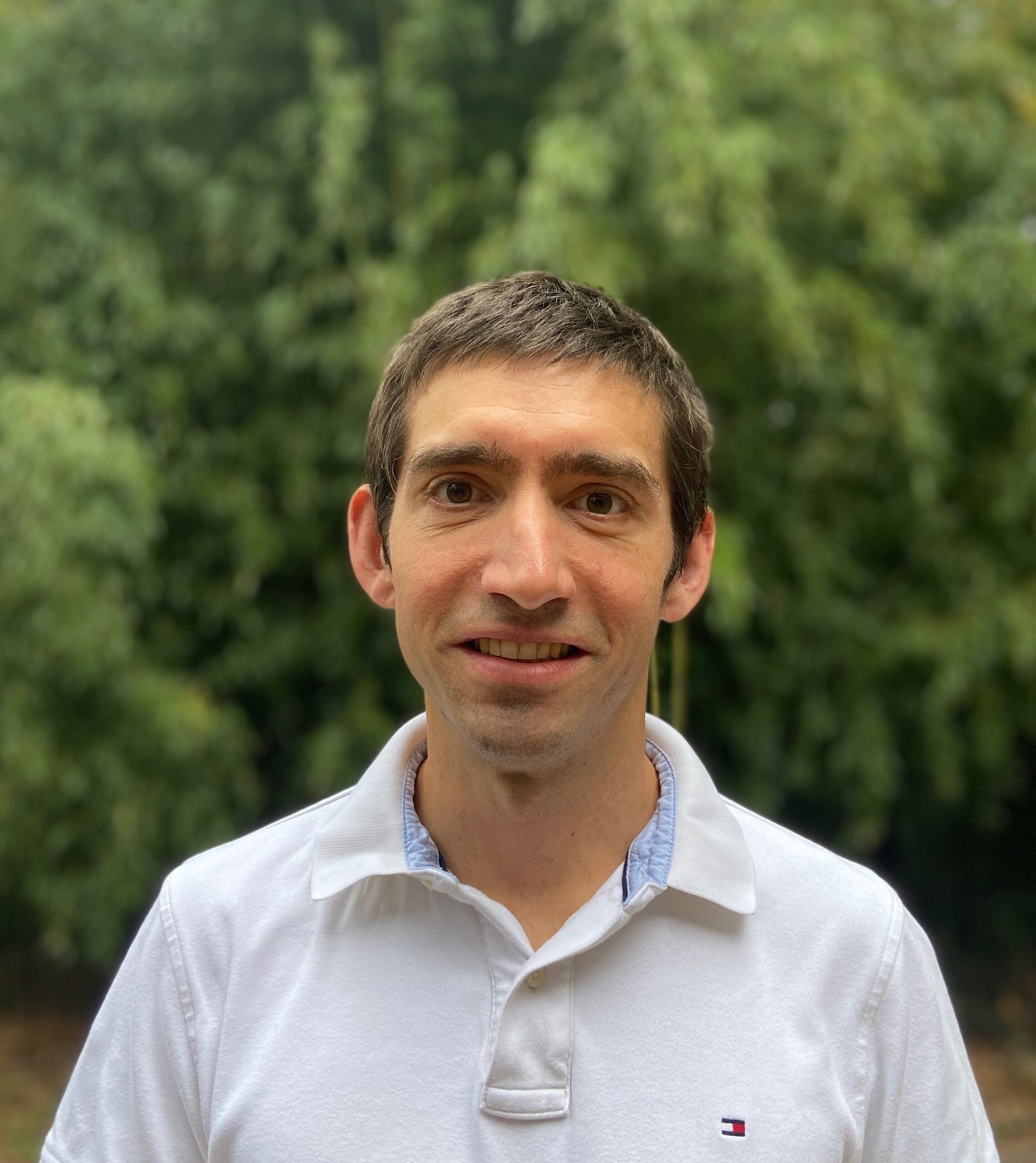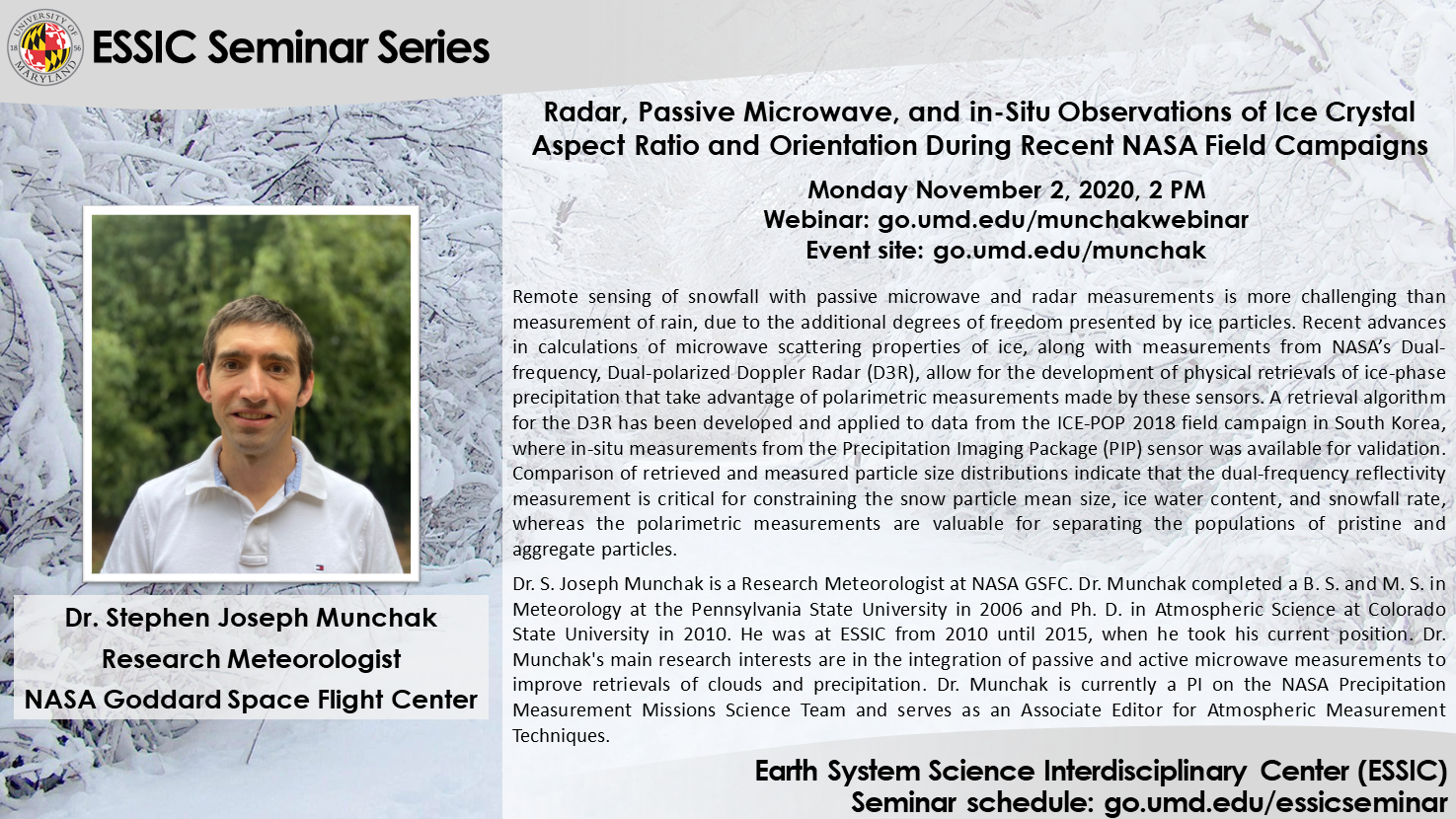
Radar, Passive Microwave, and in-Situ Observations of Ice Crystal Aspect Ratio and Orientation During Recent NASA Field Campaigns
This event has passed. See the seminar recording here:
Dr. S. Joseph Munchak
Research Meteorologist
NASA Goddard Space Flight Center
Monday November 2, 2020, 2 PM
Abstract:
Remote sensing of snowfall with passive microwave and radar measurements is fundamentally more challenging than measurement of rain with these same instruments, due to the additional degrees of freedom in the physical characteristics of ice particles (e.g., aspect ratio, density). Recent advances in the development of databases of microwave scattering properties of realistically-shaped ice crystals and aggregates have led to the possibility to perform physically-based retrievals of ice-phase clouds and precipitation. To advance these retrievals, NASA has developed and deployed the Conically-Scanning Microwave Imaging Radiometer (CoSMIR) and the Dual-frequency, Dual-polarized Doppler Radar (D3R) in several field campaigns supporting the Global Precipitation Measurement (GPM) mission. Both of these instruments make polarimetric measurements, which are essential for constraining our knowledge of the ice particle shape and orientation distribution, which in turn has implications for the interpretation of non-polarimetric measurements (e.g., brightness temperature and nadir reflectivity profile). To make the connection between polarimetric measurements and these bulk properties of the ice particle population, a retrieval algorithm for the D3R has been developed and applied to data from the ICE-POP 2018 field campaign in South Korea, where in-situ measurements from the Precipitation Imaging Package (PIP) sensor was available for validation. Comparison of retrieved and measured particle size distributions indicate that the dual-frequency reflectivity measurement is critical for constraining the snow particle mean size, ice water content, and snowfall rate, whereas the polarimetric measurements are valuable for identifying proportion of pristine and aggregate crystals, their relative sizes, and orientation distribution. Over the next two winters, the D3R is planned for deployment in the IMPACTS field campaign with further opportunities to collect data in winter storms, this time with coordinated airborne radar and radiometer measurements.
Bio-sketch:
Dr. S. Joseph Munchak is a Research Meteorologist at NASA Goddard Space Flight Center (GSFC), Greenbelt, Maryland. Dr. Munchak completed a B. S. and M. S. in Meteorology at the Pennsylvania State University in 2006 and Ph. D. in Atmospheric Science at Colorado State University in 2010. He was a Research Associate and Assistant Research Scientist at the University of Maryland, College Park’s Earth System Science Interdisciplinary Center from 2010 until 2015, when we took his current position at NASA GSFC. Dr. Munchak’s main research interests are in the integration of passive and active microwave measurements to improve retrievals of clouds and precipitation. This work has many avenues which Dr. Munchak has engaged in current and past research investigations, including development of three-dimensional inversion methods, optimal parameterizations of rain and snow particle size distributions, development of clear-air retrievals for precipitation detection, and surface characterization for active and passive sensors. Dr. Munchak is currently a PI on the NASA Precipitation Measurement Missions Science Team and serves as an Associate Editor for Atmospheric Measurement Techniques.
Webinar info:
Webinar thread: https://go.umd.edu/munchakwebinar
Event site: https://go.umd.edu/munchak
Webinar number: 120 915 5100
Webinar password: essic
To join the audio conference only:
US Toll: 1-415-655-0002
Global call-in numbers
For IT assistance:
Cazzy Medley: cazzy@umd.edu
Travis Swaim: tswaim1@umd.edu
Resources:
Seminar schedule & archive: https://go.umd.edu/essicseminar
Seminar Google calendar: https://go.umd.edu/essicseminarcalendar
Seminar recordings on Youtube: https://www.youtube.com/user/ESSICUMD


